
The history of science movies nominated for Oscars is not a very long one. Aside from the technical achievement awards or an occasional nomination for acting merits, the Best Picture category has historically not opened its doors to scientific content, save for notable nominees “A Clockwork Orange,” “District 9,” “Inception” and “Avatar.” A documentary about science has never been nominated for the Best Documentary category, until this year, with How To Survive a Plague, Director David France’s stunning account of the brave activists that brought the AIDS epidemic to the attention of the government and science community in the disease’s darkest early days. “Plague” set history last weekend by becoming the first “Best Documentary” nominee with an almost entirely scientific/biomedical narrative. More importantly, it also established a standard by which future science documentaries should use emotional storytelling to captivate audiences and inspire action. ScriptPhD review and discussion under the “continue reading” cut.
“How To Survive a Plague” picks up where groundbreaking companion AIDS film “And the Band Played On” drops off, around 1987, with the formation of the AIDS Coalition to Unleash Power (ACT UP) advocacy group, which is the central protagonist of the documentary. The AIDS virus had been identified, isolated and diagnosed in patients. But as a running ticker throughout the movie reminds us, the AIDS death toll knew no limit. By 1988, 70,000 people had already perished, a number that would climb to an astonishing 500,000 by 1997. Complacency and frustration were the norm among medical professionals, who treated patients with a series of “what the hell” drugs, when they’d even consider treating them. The scientific community, although recognizing that research was necessary, devoted little money or manpower. Even early drugs that showed experimental efficacy or relieved symptoms in AIDS patients were dismissed.
Scientists and the government were the targets of ACT UP’s fury and protests.
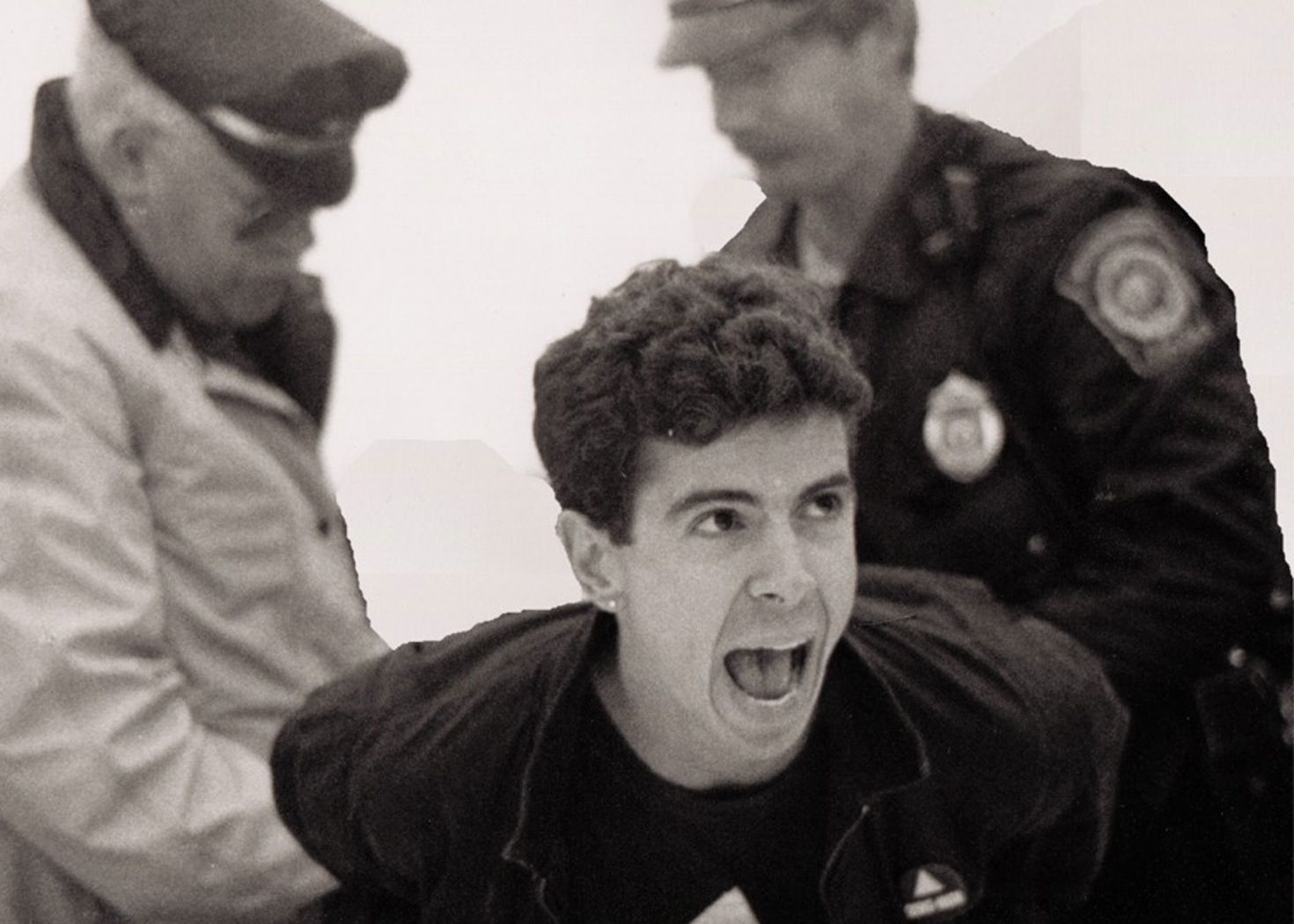
But by the late 80s/early 90s, ACT UP’s mission had reached a critical Phase II: conformity. Extremists and truculent zealots were dismissed to the sidelines, while the group became self-made scientists, learning everything from medicine to virology and immunology to chemistry. Rather than shut down the FDA for a day like they’d done years ago, they showed up to a scientific meeting in suits and ties to hand out a well-thought-out publication worthy proposal on AIDS research and treatment timelines. Impressed scientists took note. By the time charming ACT UP leader Peter Staley addresses an international convention meeting of the American Society for Microbiology, he is given a standing ovation. ACT UP’s fight, the fight of the gay community, had now become a global fight.
In many ways, “How To Survive a Plague” is an emotional contrast to “And the Band Played On,” even though the former is a documentary largely consisting of reel footage of the events it portrays, while the latter is a dramatized account of scientists racing to find the identity of the AIDS virus. Although “Band” touches briefly on the fear, government insouciance and distrust within the gay community in the earliest days of the bourgeoning epidemic, it is very much a pure science film. Its themes of persistence, no-holds-barred competition, stunningly accurate epidemiology and virology details and race to an answer could be about any virus in any historical time. “Plague” puts all of the science and medicine of the AIDS crisis in an emotional and historical context. A running death ticker as the years pass lends an urgency to the battle of the ACT UP activists. Moreover, France inserts actual footage of their protests (the most famous being an all-day takeover of the National Institutes of Health), meetings and press conferences, and difficult-to-watch footage of AIDS that shines an intimate spotlight of realism on the crisis. As France notes, the AIDS crisis burgeoned concomitantly with the appearance of the camcorder, making early AIDS activists “the very first social movement to shoot a world the dominant culture was ignoring.”

Scientists in the movie range from heroes and anti-heroes to ordinary people, which is a rarity in entertainment media. By far the biggest hero is Dr. Iris Long, a chemist with 20 years of experience in retroviral drug development. Although she knew no one with AIDS and never met a homosexual in her life, Dr. Long became a mentor and science advisor to ACT UP. Her fearless leadership and ability to educate the members led to direct reforms at the FDA and NIH. Other members like Bill Bahlman (the first to demand a direct drug treatment for AIDS) and Garance Franke-Ruta (a high school drop out and science nerd who became the group’s leading advocate for science-based activism) led the internal change to join forces with scientists rather than fighting them. And for every scientist that ignored the AIDS crisis was a research pioneer like Anthony Faucci, now head of the NIH Institute of Allergy and Infectious Disease, or a Merck chemist leading the development of anti-retroviral drugs. Moments after a graphics-filled technical explanation of how anti-retroviral drugs inhibit HIV virus replication, one of the Merck scientists interviewed in the film broke down into tears when recollecting the enormity of what they’d accomplished. It’s a stunning, raw moment in a film filled with them. Recent advances in writing for sci-fi have painted more complex, human depictions of scientists and researchers. But such insights are far too rare in documentaries.
In a strangely macabre way, “Plague” is an emotional feel good story, but one that isn’t over yet. Through the darkest days of rallying a tone-deaf world, all the while losing members day by day, ACT UP’s commitment and perseverance never failed. By the time surviving members, some of whom professed in footage that they never expected to live, are finally revealed in the present day in the film’s last act, the audience is flooded with gratitude and catharsis. The science world, which once didn’t know what to make of this emerging virus, took only one year from the time the first protease inhibitor hit the market to come up with and approve the current three-drug treatment cocktail.
But the film’s unstated, looming conclusion is that we will never get back the millions of people who died during a decade of silence. Too many people continue to perish, most in what has become a new frontier for the AIDS crisis. The fight for a cure or prevention is not over. And a new plague could always be around the corner. It is our hope that future documentarians take note of both the film’s message and its delivery style.
Take a look at the official trailer for “How To Survive a Plague”:
~*ScriptPhD*~
*****************
ScriptPhD.com covers science and technology in entertainment, media and advertising. Hire our consulting company for creative content development.
Subscribe to free email notifications of new posts on our home page.
]]>
Earlier this year, the Susan G. Komen Foundation made headlines around the world after their politically-charged decision to cut funding for breast cancer screening at Planned Parenthood caused outrage and negatively impacted donations. Despite reversing the decision and apologizing, many people in the health care and fund raising community feel that the aftermath of the controversy still dogs the foundation. Indeed, Advertising Age literally referred to it as a PR crisis. If all of this sounds more like spin for a brand rather than a charity working towards the cure of a devastating illness, it’s not far from the truth. Susan G. Komen For the Cure, Avon Walk For Breast Cancer and the Revlon Run/Walk For Women represent a triumvirate hegemony in the “pink ribbon” fundraising domain. Over time, their initial breast cancer awareness movement (and everything the pink ribbon stood for symbolically) has moved from activism to pure consumerism. The new documentary Pink Ribbons, Inc. deftly and devastatingly examines the rise of corporate culture in breast cancer fundraising. Who is really profiting from these pink ribbon campaigns, brands or people with the disease? How has the positional messaging of these “pink ribbon” events impacted the women who are actually facing the illness? And finally, has motivation for profit driven the very same companies whose products cause cancer to benefit from the disease? ScriptPhD.com’s Selling Science Smartly advertising series continues with a review of Pink Ribbons, Inc..
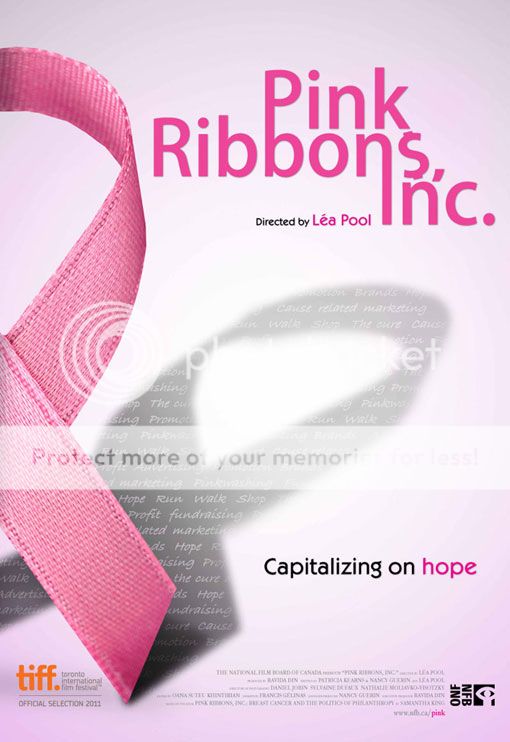
“We used to march in the streets. Now you’re supposed to run for a cure, or walk for a cure, or jump for a cure, or whatever it is,” states Barbara Ehrenreich, breast cancer survivor and author of Welcome to Cancerland, in the opening minutes of the documentary Pink Ribbons, Inc. Directed by Canadian filmmaker Lea Pool and based on the book Pink Ribbons, Inc.: Breast Cancer and the Politics of Philosophy by Samantha King, the documentary features in-depth interviews with leading authors, experts, activists and medical professionals. It also includes an important look at the leading players in breast cancer fundraising and marketing. The production crew filmed a number of prominent fundraising events across North America, using the upbeat festivities (where some didn’t even visibly show the word ‘cancer’) as the backdrop for exploring the “pinkwashing” of breast cancer through marketing, advertising and slick gimmicks. At the same time, showcasing well-meaning, enthusiastic walkers, runners and fundraisers is a double-edged sword and was handled with the appropriate sensitivity by the filmmakers. Pool wanted to “make sure we showed the difference between the participants, and their courage and will to do something positive, and the businesses that use these events to promote their products to make money.”
Often lost amidst the pomp and circumstance of these bright pink feel-good galas is that the origins of the pink ribbon are quite inauspicious. The original pink ribbon wasn’t even pink. It was a salmon-colored cloth ribbon made by breast cancer activist Charlotte Haley as part of a grass roots organization she called Peach Corps. From a kitchen counter mail-in operation, Haley’s vision grew to hundreds of thousands of supporters, so much so that it caught the attention of Estee Lauder founder Evelyn Lauder. The company wanted to buy the peach ribbon from Haley, who refused, so they simply rebranded breast cancer to a comforting, reassuring, non-threatening color: bright pink. And before our very eyes, a stroke of marketing genius was born.
As the pink ribbon movement took hold of the fundraising community, the money started to spill over into mainstream advertising, adorning everything from the food we eat to the clothes we wear, all under the auspices of philanthropy. In theory, people should feel great about buying products that return some of their profits for such a great cause. In practice, many of these campaigns simply throw a bright pink cloak over false, if not cynical, advertising. Take Yoplait’s yearly “Save Lids to Save Lives” campaign:
For every lid you save from a Yoplait yogurt (and mail in, using a $0.44 stamp, mind you!), they will donate 10 cents to breast cancer research. If you ate three yogurts per day for fourth months, you will have raised a grand total of $36 for breast cancer research, but spent more on stamps and in environmental shipping waste. Not as impressive when you break it down, eh?
A recent American Express campaign called “Every Dollar Counts” pledged that every purchase during a four month period would incur a one cent donation to breast cancer research. Unfortunately, they never quantified donations commensurate to spending, so that meant whether you charged a pack of gum or a big screen TV to your AmEx, they would donate a penny. The breast cancer community was so outraged by this hubris, they staged a successful campaign to rescind the ads. The fact is, the above examples demonstrate that pink ribbons have become an industry, with demographics and talking points, just like everything else. Pinkwashing campaigns tend to target middle class, ultra-feminine white women. Why? Because they are typical targets that move the products these industries are trying to sell. Take the NFL’s recent pink screening campaign. Well-meaning or not, it came amidst a series of crimes and violence by NFL players, some of which was domestic in nature. One can imagine that players adorned in hot pink gear would have been a smart way to mollify its rather impressive female fanbase.
As Ehrenreich states in the documentary, the collective effect of this marketing has been to soften breast cancer into a pretty, pink and feminine disease. Nothing too scary, nothing too controversial. Just enough to keep raising money that goes… somewhere. Take a look at the recent chipper television campaign for the Breast Cancer Centre of Australia:
While some of the breast cancer-related branding and pink sponsorships mislead through good intentions, others are a dangerous bold-faced lie. Some of the very companies that sponsor fundraising events and make money off of pink revenue either make deleterious products linked to cancer or stand to profit from treatment of it. Revlon, sponsors of the Run/Walk for Women, are manufacturers of many cosmetics (searchable on the database Skin Deep) that are linked to cancer. The average woman puts on 12 cosmetics products per day, yet only 20% of all cosmetics have undergone FDA examination and safety testing. The pharmaceutical giant Astra Zeneca can’t seem to decide if it’s for or against cancer. They produce the anti-estrogen breast cancer drug Tamoxifen, yet also manufacture the pesticide atrazine (under the Swiss-based company Syngenta), which has been linked to cancer as an estrogen-boosting compound. Breast cancer history month (October) is nothing more than a PR stunt that was invented by a marketing expert at… drumroll please… Astra Zeneca! Their goal was to promote mammography as a powerful weapon in the war against breast cancer. But as the American arm of the largest chemical company in the world, the reality is that Astra Zeneca was and is benefiting from the very illness it was urging women to get screened for. Perhaps the most audacious example of them all is pharmaceutical giant Eli Lilly. Sponsors of cancer research and treatment, both in medicine and the community, Lilly produced the cancer and infertility causing DES (diethylstilbestrol), and currently manufactures rBGH, an artificial hormone given to cows to make them produce more milk. rBGH has been linked to breast cancer and a host of other health problems. These strong corporate links in many ways explain the uplifting, happy, sterile messaging behind the pink ribbon. Corporations are, quite bluntly, making money off of marketing cancer, so if they don’t put a smiley face on the disease, they will alienate their customers and the conglomerate businesses pouring money into these campaigns.

Juxtaposed with the uplifting, bombastic, bright pink backdrop of the various cancer fundraisers and rallies, Pink Ribbons, Inc. quietly profiles the IV League, an Austin, TX-based support group for metastatic breast cancer. The women meet on a regular basis to share stories, help each other cope and accept the rigors of the disease and realities of dying. Many of the group members interviewed found current breast cancer campaign marketing offensive, tastelessly positive and falsely empowering (“If you just get screened and get mammograms and eat healthy, breast cancer can’t happen to you!”). The group, which has lost 10 members last year alone, is among a large faction of cancer sufferers that feel left out in the pinkwashing tide of marketing campaigns. Highlighting that sometimes you do get cancer because of no explanation, and sometimes you won’t respond to any treatment is a downer. It’s not the kind of uplifting story that advertising campaigns are built around, leaving the women feeling as if they’re living alone with the fact that they are dying. “You’re the angel of death,” remarks IV Leaguer Jeanne Collins. “You’re the elephant in the room. And they’re learning to live and you’re learning to die.” By utilizing powerful messaging keywords like BATTLE, WAR and SURVIVOR, cancer foundations and brands are subliminally putting down those who didn’t survive. And there are many who don’t survive — someone dies of breast cancer every 69 seconds. Are they suggesting that people who died or didn’t respond to treatment simply didn’t try hard enough? One of the most poignant moments in the film was an IV League Stage 4 cancer patient, probably weeks or months from her death: “You can die in a perfectly healed state.”
Although Pink Ribbons, Inc. is a sobering polemic against the mindless trivialization of commercializing breast cancer and even misdirecting funds from where they can be most helpful, it is not a hopeless film. Far from projecting pessimism, the film showcases the tremendous willpower and manpower that these three-day walks engender. It is simply misdirected. If hundreds of thousands of women and men can be motivated to fundraise, walk, run and (in some cases) jump out of planes, the effort is absolutely there to stop breast cancer. “Do something besides worry to make a difference,” concludes Barbara Brenner. “We have enormous power, if only we’d use it.” Director Lea Pool hopes that the film will encourage people to “be more critical about our actions and stop thinking that by buying pink toilet paper we’re doing what needs to be done. I don’t want to say that we absolutely shouldn’t be raising money. We are just saying ‘Think before you pink.'”
Watch the trailer for Pink Ribbons, Inc. here:
Pink Ribbons, Inc. goes into wide release in theaters nationwide June 8, 2012 and was released on DVD in September of 2012.
~*ScriptPhD*~
*****************
ScriptPhD.com covers science and technology in entertainment, media and advertising. Hire our consulting company for creative content development.
Subscribe to free email notifications of new posts on our home page.
]]>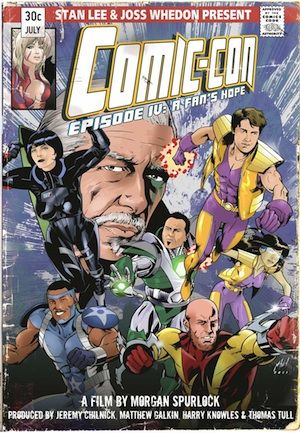
Every July, hundreds of thousands of fans descend upon the city of San Diego for a four-day celebration of comics, sci-fi, popular arts fandom and (growingly) previews of mainstream television and film blockbusters. What is this spectacular nexus of nerds? Comic-Con International, of course! From ScriptPhD’s comprehensive past coverage, one can easily glean the diversity of events, guests and panels, with enormous throngs patiently queueing to see their favorites. But who are these fans? Where do they come from? What kinds of passions drive their journeys to Comic-Con from all over the world? And what microcosms are categorized under the general umbrella of fandom? Award-winning filmmaker Morgan Spurlock attempts to answer these questions by crafting the sweet, intimate, honest documentary-as-ethnography Comic-Con Episode IV: A Fan’s Hope. Through the archetypes of five 2009 Comic-Con attendees, Spurlock guides us through the history of the Con, its growth (and the subsequent conflicts that this has engendered), and most importantly, the conclusion that underneath all of those Spider-Man and Klingon costumes, geeks really do come in all shapes, colors and sizes. For full ScriptPhD review, click “continue reading.”
In 1970, comics fan Shel Dorf organized a three-day gathering in San Diego at the US Grant hotel as a fringe gathering for the most enthusiastic amateur comics fans, aspiring artists and writers to interact with comics pros. It drew 300 fans. This was the backdrop against which young Morgan Spurlock grew up in West Virginia, passionately consuming comics and horror films, transported to a different world where everyone was a little bit askew and “weird.” “I wasn’t just a fan,” Spurlock remarks. “I was addicted.” It wasn’t until 2009 that he was able to make his first amateur journey to Comic-Con International San Diego, by now a cultural juggernaut regularly drawing over 150,000 fans, amid a vastly changed (and comics-cultural) landscape. Nevertheless, Spurlock was thrilled. He ran into boyhood idol Marvel animator Stan Lee, and thanked him for all the confidence and creativity he helped to inspire. Stan’s response? “Let’s make a documentary about Comic-Con!” And so, gathering forces with Lee, sci-fi cult icon Joss Whedon, among others, Spurlock embarked on a two-year journey that captured the 2010 Con (the 40th Anniversary edition) in all its glory—including panels, parades, photos, costumes and interviews with notable celebrities that have turned passions into professions. Most of all, however, Spurlock captured the fans.

To winnow down the most compelling stories for the documentary, Spurlock held a casting call online that drew thousands of submissions. Among them was Holly Conrad, a talented, award-winning costume designer from a small town hoping to win the grand prize at the annual Comic-Con costume show. Knowing her slim odds, especially because of where she comes from, and the importance of making a splash for her career to take off, Holly called Comic-Con a “suicide mission for her future.” Also in a pressure cooker was Chuck Rozanski, proprietor of Mile High Comics, Americas largest inventory and dealer of comic books. Chuck uses the hectic, chaotic, crowded Comic-Con exhibit area to sell rare and collectible comics, comprising a substantial portion of his company’s income for the year, but faces a more fractured Con, with a smaller focus on comics every year. If he doesn’t make a killing at this year’s Com, Chuck knows the future of his whole business might be at risk. Sharing the convention floor with Chuck are comics-obsessed bartender Skip Harvey and US Airforce pilot and family man Eric Henson, two amateur graphic artists also putting their destiny on the line in San Diego. Armed with only a portfolio and a dream, Eric and Skip are hoping to get noticed at the portfolio critique sessions and land a professional design contract with one of the comics representatives. One succeeds (to the preview audience’s delight) and one learns he is a very big fish in a very small bowl, and must cultivate his talent for the greater stage. Intermingled for comic relief is the adorable story of James Darling and Se Young Kang, a couple who met and started dating at the previous year’s Con. James is planning to ask Se Young to marry him at this year’s Con, but must overcome a slew of hilarious obstacles to pull of his nerdy romantic feat.

Comic-Con Episode IV: A Fan’s Hope is a terrific purview into the conflicts and dissent of the modern Con. Hidden beneath the popularity of the yearly event is a schism between older fans who have been coming for years (and feel somewhat lost in the shuffle) and the new fans, such as lovebirds James and Se Young, who may not even necessarily be there for comics events. Longtime attendees such as Kevin Smith admitted that the event has become a “beancounter” with tremendous power to preview movies and television, something Hollywood has noticed and latched onto. One can legitimately forget the presence of comics and the graphic arts at Comic-Con altogether without trying very hard. This presents a huge problem for the poignant storyline of Chuck Rozanski, with whom we empathize as he struggles to sell comics through 4-day event. When ScriptPhD.com asked Spurlock at a recent Los Angeles junket about what surprised him the most, he pointed to the sheer volume of what goes on at Comic-Con, especially the job-hunting aspect of the Comic-Con exhibition floor. His favorite moment in the movie is the comparison of Comic-Con to a Russian nesting doll, with events hidden beneath other events. “I showed the movie to people and they responded that they didn’t even know that went on at Comic-Con! There is something for everyone, no matter what your passion.” Spurlock remarked.
The documentary is at its strongest and most successful when the focus turns to what the essence of what Comic-Con is defined by—the fans. “We all weighed in with what we thought were the most important pieces of the story,” Spurlock says. “But in the end it all came back to the fans.” It is the fans whose enthusiasm drives the growth of events like Comic-Con, however much nostalgia for the past may feel threatened. It is the fans whose passion continues to motivate and drive geniuses like Stan Lee to this very day. That very same passion also launches new careers, as Holly Conrad found. Since the filming of this documentary, she has moved to Hollywood and found successful work as a costume designer on several productions. Lastly, and most importantly, it is the fans who create that magical atmosphere where no matter who you are, where you come from, what you look like, how “out there” you behave, you find total acceptance and camaraderie amongst a group of treasured friends just as passionate and devoted as you are. To Spurlock, the Con “reminds us all of the importance of dreams and of wonder. It’s not just an event… it’s a state of mind.”
Trailer for Comic-Con Episode IV: A Fan’s Hope:
“Making of” featurette:
Comic-Con Episode IV: A Fan’s Hope was released in select cities on April 5, and theaters and video on demand on April 6th.
~*ScriptPhD*~
*****************
ScriptPhD.com covers science and technology in entertainment, media and advertising. Hire our consulting company for creative content development.
Subscribe to free email notifications of new posts on our home page.
]]>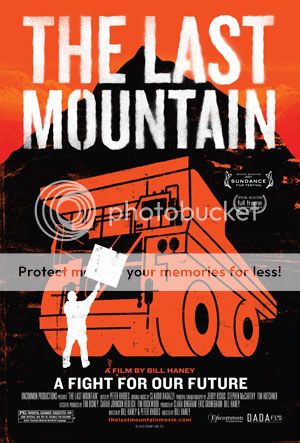
About a year ago, a little publicized, unheralded documentary named Mountaintop Removal (which ScriptPhD.com reviewed) attempted to deconstruct the environmentally devastating practice of the same name literally destroying the Appalachian geography of West Virginia’s coal river valley. Honest, yet modestly shot and produced, the small-scale documentary needed a Hollywood touch to resonate on a human level to advance its powerful cause. It got what it needed in The Last Mountain, a celebrated selection of this year’s Sundance Film Festival. This important new documentary succeeds in both relaying the urgency of a destructive coal mining practice that is literally zoning in on one last undamaged mountain as well as forging a human connection with the townspeople battling to save it. Full ScriptPhD.com review under the “continue reading” cut.
Most people don’t think twice about where the electricity for their light bulbs comes from. Or if they know it primarily comes from coal, they are not aware of how that coal comes to see the light of day. In the valleys and mountaintops of idyllic Appalachia, the coal industry detonates the explosive power of a Hiroshima bomb every week, utilizing a crude process called mountaintop removal. There is nothing scientific or technical about mountaintop removal. It is crude, cruel and its effects non-reversible. First, trees and other natural ecology are removed from the tops of mountains. Then, dynamite splits the mountain open to unearth a layer of coal that is mined by brave men risking their lives in ungodly working conditions. When the layer is depleted, the next layer is blasted, until nothing is left but a hollow shell of a devastated mountain. In its wake, the process leaves behind toxic sludge piles containing arsenic, lead and mercury, contaminated rivers and streams, fine particulate airborne matter that creates an epidemiological health nightmare, and unlivable communities. Mountaintop removal has already destroyed 500 Appalachian mountains, decimated 1 million acres of forests, and buried 2,000 miles of streams.
Take a look at a clip from The Last Mountain that shows the destruction from an aerial view:
In the beautiful mountains of the Coal River Valley in West Virginia, mining corporations such as Massey Energy are blasting the mountains of Appalachia into extinction, polluting the air and water with blithe impunity, and amassing the kind of profits that allow them to wield massive lobbying power in Washington, DC to both repeal existing environmental regulations and obviate the ratification of new ones. One small community has had enough. Their only schoolhouse sits at the base of a silo where 28 million gallons of toxic sludge left over from the coal mining are held back by a flimsy levee. Their neighbors and friends—ranging from 5 to 63 years old to—are dying in masses from strange tumor clusters. Water filters that should last 3-4 months get plugged up after two weeks. The very last mountain in Coal River, protecting the community from massive flooding after rainfall, is being targeted for blasting. And that is when the people of Coal River decide to fight back.
The Last Mountain is not just a standard environmental cautionary tale, but also an uplifting tale of citizens taking back their community. Helping the cause is noted environmentalist Robert F. Kennedy, Jr., who travels to Coal River, aligns with the community, and attends dozens of rallies that are held to protest the actions of Massey Energy. In one of the film’s lighter moments, a humble West Virginian remarks “I never thought I’d have a Kennedy in my living room!” It is these very human moments that ultimately connect the audience to a cause seemingly unrelated to our lives. The most poignant moment of The Last Mountain is live footage of Coal River residents that had traveled to the governor’s offices in Charlotte to present him with money raised through a local Pennies For Promise campaign to build a new, safer schoolhouse (an ultimately successful initiative.) At first the governor is touched, even amused, by the rural denizens. But when they bring up the actions of Massey Energy, and the governor’s own futility in stopping the damage to their community, he is stunned, even embarrassed, even going so far as to have the West Virginia government arrest the protesters—one of whom was a 91-year-old woman in a flag-draped wheelchair. “Why are our kids any different?” former Massey Energy contractor turned activist Ed Wiley shouts at the governor. “Because they’re in the coal fields? They’re on the wrong side of the mountain?”
If you think this movie, or mountaintop removal itself, doesn’t affect you, you’re wrong. Almost half of the electricity produced in the US comes from the burning of coal (that’s 16 pounds of coal each day for each man, woman, and child!). 32% of that coal comes from…you guessed it…the mountains of Appalachia. It also happens to be the #1 sources of greenhouse gases worldwide. And it doesn’t stop there. The toll on health from the burning of coal nationwide—contributing to such problems as 10 million asthma attacks, brain damage in newborns and thousands of premature deaths—adds up to $345 billion annually. We are all paying the cost of mountaintop removal in one way or another. You’re connected to coal, whether you realize it or not.

As The Last Mountain eventually conveys, this is a tale about so much more than blasting off a mountain—it’s about hubris and powerful people thinking they can do whatever they want, while destroying lives in the process. How’s this for a silent statistic? Massey Energy’s 28 impoundments have spilled 24 times in the last decade, contaminating rivers with 300 million gallons of sludge—that is twice the amount released in the BP oil spill in the Gulf that shocked the world. After a $28 million dollar settlement for their environmental violations, Massey Energy committed 180 more violations with no impunity. And the tragic thing is that the alternative technology is so much more effective and inexpensive. The filmmakers end with an uplifting visit to Portsmouth, WV, a municipality that supplies ¾ of its electricity needs for the community with two windmills with low-grade Category 2 winds. The winds in the Coal River Valley? The highest possible—Category 5. One can only imagine how many jobs and clean energy could be created from wind turbines in the Coal River Valley. A 1991 Department of Energy study concluded that only three US States, Kansas, North Dakota and Texas, have enough harnessable wind energy to supply the entire nations energy needs. Twenty years later, we have the technology to make it happen.
The ultimate message of The Last Mountain is that is not enough to simply be outraged anymore. We are all users of the electricity and power that is generated from the sacrifices of the Appalachia residents and miners. The imagery of environmental devastation is so shocking, the deregulation and egregious indifference of the coal mining companies’ various violations so appalling, that we begin to feel somehow complicit in perpetrating this modern American tragedy. Fixing it starts with watching documentaries like The Last Mountain, but also in taking the kind of inspiring action as that of the small rural West Virginia community that the film portrays. Ordinary people, banded together in a common purpose, can indeed move mountains. And sometimes, they can even save them.
Trailer:
The Last Mountain was released in limited screenings on June 15th, and goes into theaters nationwide later in June.
~*ScriptPhD*~
*****************
ScriptPhD.com covers science and technology in entertainment, media and advertising. Hire our consulting company for creative content development.
Subscribe to free email notifications of new posts on our home page.
]]>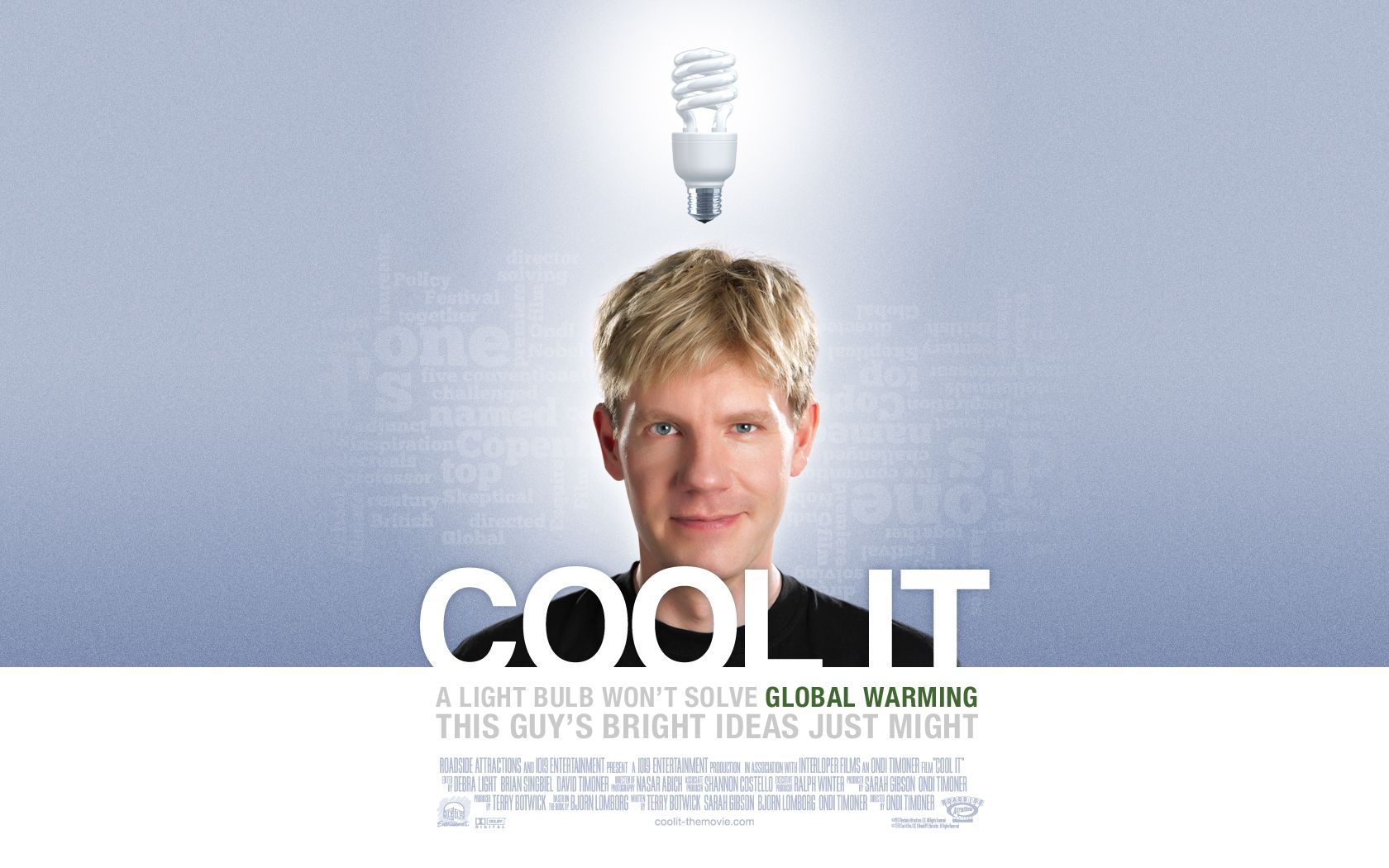
Fewer topics in contemporary science and technology policy have generated as much controversy or vociferous debate as global warming (more recently branded as climate change) and more importantly, how to mitigate its effects. Recent international treaties such as The Kyoto Protocol and conferences such as last December’s United Nations Climate Change Conference in Copenhagen have largely paid lip service towards actionable change and technology aimed at eradicating the precursors and causes of global warming. In the middle of this stalemate is an increasingly hostile rhetoric that has bifurcated into two divergent, unyielding camps—either you believe climate change and greenhouse emissions are a fraud, period, or you believe the problem is so imminently dire that surely, the end of the world is nigh. This dichotomy was no more apparent than during last year’s ”Climategate” controversy, in which hacked emails leaked from the University of East Anglia’s Climatic Research Unit in England were interpreted, depending on which report you read, as scientific fraud and tampering or reinforcement for climate science. Perhaps it is time, as the eponymous title of our latest Editor’s Choice suggests, for us all to Cool It. An environmental film about 21st Century problems, and the modern solutions they necessitate, Cool It presents an unapologetic, practical approach towards global warming and the problems that eclipse it. It’s time we all listened. ScriptPhD.com continues our ongoing “It’s Not Easy Being Green” series with a review of this thought-provoking, conversation-starting film. After seeing a recent screening in Los Angeles, we are proud to give Cool It our blog’s rare highest honor—Editor’s Choice. Join the conversation now under the “continue reading” cut.
A (Very) Brief History of Climate Change in Media and Entertainment

In 1896, Swedish chemist Svante Arrhenius made the first observation that fossil fuel combustion had a correlation to global warming. Discovery Channel has a terrific interactive on the history of scientific discovery in climate change here. It wasn’t until 1962, when a serialized novel called Silent Spring by Rachel Carson was published in The New Yorker magazine, that the issue took forefront in the public media. Considered one of the most influential works in the area of climate change, Silent Spring gives a meticulous account of how the pesticide DDT enters the food chain and accumulates in the fatty tissues of animals, including human beings, and causes cancer and genetic damage. Because of her book, President John F. Kennedy ordered his Science Advisory Committee to look into the book’s claims (use of DDT has since been banned, much to the consternation of bedbug sufferers everywhere!). President Nixon went on to pass the Clean Air Act and create the Environmental Protection Agency, which now has the power to regulate harmful greenhouse gas emissions. Another major milestone for climate change in modern media was the 2006 release of Al Gore’s Oscar-winning film An Inconvenient Truth, which has been given credit not only for re-energizing the environmental movement, but for raising the profile of global warming. (Cool It has been referred to as an “anti-Inconvenient Truth,” but we’ll get to that in a moment.) Marketing and advertising are never far behind the cultural zeitgeist, as green branding has been one of the most successfully growing sectors in the industry. An article in Advertising Age in April of 2010 listed the 10 Green Marketing Milestones of our time.
Who is Bjørn Lomborg and Why is He So Controversial?
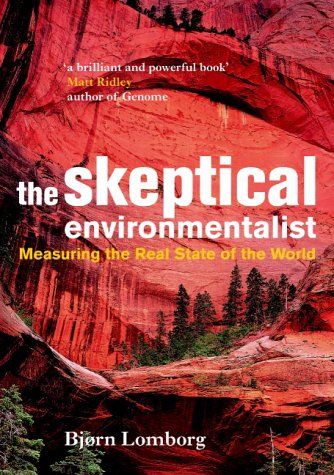
In 2001, a then-unknown adjunct professor at the Copenhagen Business school named Bjørn Lomborg published a book called The Skeptical Environmentalist, which claimed that not only were some of the more dire claims of pending environmental catastrophe exaggerated, but that they were flat-out wrong. Though a carefully-researched volume, the central thesis of Environmentalist was anathema to the academic climate community, and caused an immediate hailstorm on both sides of the climate change spectrum. Accusations of scientific dishonesty, one of the most austere charges within academia, were brought forth by several environmental scientists to the Danish Committees on Scientific Dishonesty. Their finding was mixed, ruling that The Skeptical Environmentalist was scientifically dishonest, but absolving Lomborg himself due to his “lack of expertise” in the field. The decision was later annulled by the Ministry of Science, Technology and Innovation, citing a lack of proof and specific standards. Lomborg has remained a polarizing, contentious figure ever since.
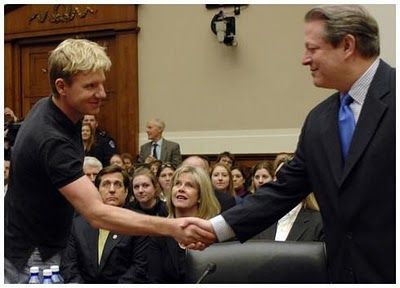
Lomborg, since named one of the 100 most influential people by Time magazine, is now the director of the Copenhagen Consensus Center, where he brings together some of the world’s top economists, including five Nobel laureates, to brainstorm how to solve the world’s most pressing problems. He followed up his first book with another eco-centered piece, Cool It, that offers an alternative platform for the trillions of dollars of current funding aimed at counteracting (often ineffectively) the effects and sources of global warming. In no way denying the very real phenomenon of climate change, Cool It is instead a polemic on contemporary global problems that merit our action and attention right now and that, if solved, will simultaneously obviate climate effects as a bonus. With the help of Director Ondi Timoner, Lomborg has translated Cool It into an extremely interesting, thought-provoking and entertaining documentary. ScriptPhD.com got a sneak peek in Hollywood a couple of weeks ago.
REVIEW: Cool It
ScriptPhD GRADE: A
“Fear has been ruling the climate debate,” declares Lomborg in the opening minutes of Cool It, proclaiming what is a sort of mantra for this film. Fear sells. Fear opens eyes. Fear declares attention. (Read our piece on The Science of Fear.) But fear drowns out messages in hyperbole and bombast. Far from decrying the looming reality of climate change and global warming, Lomborg is simply suggesting that it isn’t the impending catastrophe that media and scientists have ingrained us to believe. Fueling these misconceptions, Lomborg believes, are popular culture messages and movies that simply exaggerate claims, and do nothing to add to a productive conversation about global warming. Take a look, for example, at the opening film shown at the United Nations Climate Change Conference 2009 (COP15) in Copenhagen from the Ministry of Foreign Affairs of Denmark and decide for yourselves if its hyperbolic, fear-fueled message is more about solutions or rhetoric:
This, a commercial for planestupid.com that attempts to correlate airplane emissions to extinction of polar bears:
Turns out that the Kyoto Protocol, if enacted to its full potential, would only save one polar bear per year lost to the effects of global warming. This does nothing to ameliorate a far bigger problem—we shoot 300-500 polar bears to death every year!
“When is something fashionable and when is it rational?” Lomborg asks us. In 2010, hundreds of millions of people participated in Earth Hour, a collective global undertaking to turn off our lights for an hour. Many of the participants undoubtedly lit candles instead, which unfortunately emit twice the CO2 emissions of a light bulb! The 20 trillion in proposed global funding, even if appropriated, will only result in a 0.1 ºF temperature effect by the end of the century. Cap and trade, the Kyoto Protocol and even this past year’s Copenhagen conference, Lomborg asserts, are a waste of time and money that perpetuate decades-old failed promises. Furthermore, the only way for poor countries to climb out of penury and into first-world status is by burning coal and consuming energy. It’s simply unrealistic to think otherwise. The problems that keep Lomborg up at night—AIDS, malaria, disease, lack of access to clean drinking water—are far more important to third world countries than global warming. Nothing illustrates the schism in priorities better than the juxtaposition of two classroom scenes, one in rural Africa and one in urban England. In each case, Lomborg asks the students what their priorities are, what they wish for and what frightens them. To a one, the African students wish for basic luxuries that we take for granted, such as a house and a car, with most rating their top priority as health care. The British students, warm, safe, comfortable, and fed, worried mostly about global warming and our planet’s demise, drawing pictures and describing scenarios that would make Edgar Allan Poe cower in a fetal position.
The second-half of Cool It, far from harboring anti-climate change beliefs, largely focuses on the science and technology advances that must occur to a) counteract global warming, b) make energy, and especially alternative energy, cheaper and c) solve some practical problems in the meantime. Solar panels, for example, are still ten times more expensive than fossil fuels, while unsightly and space-hungry wind turbines face a “not in my backyard” backlash from communities. Revolutionary advances such as energy garnered from water-splitting (read ScriptPhD.com’s recent article on this very phenomenon at The National Ignition Facility), and artificial photosynthesis present amazing potential to create unlimited sources of cheap energy. Lomborg interviews former Microsoft CTO, scientist Nathan Myrvold, whose idea machine includes inventions such as a nuclear energy reactor fueled by waste at a cost competitive to coal. Clearly in awe of scientists, Lomborg touches on adaptation—the notion that global warming, and certain inconveniences thereof, will impact humanity, but that we can counteract these effects through smart technology. The Dutch, 60% of whom live below the sea level, experienced a far more devastating flooding than Hurricane Katrina in 1953, and have since erected the world’s best levees. Urban cooling, such as painting all rooftops white, would impact temperatures in global warming hotspots such as Los Angeles as much as 5 ºC at a one-time cost of $1 billion. He also touches on possibilities within the highly-contested field of geo-engineering, to date largely considered a sci-fi concept, wherein global warming is literally reversed with science. Cloud brightening to reflect more solar light into space and cool the planet, volcano mimics in the stratosphere for the same purpose, experiments to literally suck the CO2 out of the air, regenerative grazing for raising farm animals—all hold immense promise for future generations.
To be sure, Cool It has an agenda, inasmuch as An Inconvenient Truth, or any other subjective work espousing a decided point of view. At ScriptPhD.com, it is not our position to wholly agree or disagree with either position, but rather to applaud the ideas they represent, and to continue a dialogue that will eventually lead to solutions. “No matter what I found over the next year,” said filmmaker Ondi Timoner of undertaking this endeavor with Lomborg, “It was worth taking on this project to see if perhaps I could create a film that would help push through the polarizing logjam that had become the never-ending (and extremely expensive) climate debate towards real and practical solutions.” It’s time to face the facts that changing one light bulb or driving one Prius, no matter how well-meant, simply isn’t going to change the world alone. It’s time to also admit that the contentious, argumentative, ineffective stale-mate that has become the climate debate is serving no one, least of all the worst-off populations needing clean water, health care and technology. Over-exaggerated, frightening tales might sell movies and commercials, but they don’t get bills passed, and they don’t apportion funds for smart, permanent solutions and scientific advancement. Love him or hate him, but Lomborg is 100% on-point in that regard. Whatever side of the climate change debate you fall on, we guarantee that seeing this film will make you rethink certain positions and priorities, while reinforcing the immutable, inescapable fact that we simply must invest in alternative energy technologies and the scientists that are revolutionizing them. Concluded Timoner: “We all breathe the same air, and we all need to unite to focus on the right priorities at this crucial tipping point.”
Let’s start a real conversation today. We welcome any and all comments and reactions as you see the film, or on this topic in general.
Cool It goes into selected release in major cities on November 12, 2010. View a list of cities and release dates here.
Cool It trailer:
~*ScriptPhD*~
*****************
ScriptPhD.com covers science and technology in entertainment, media and advertising. Hire our consulting company for creative content development.
Subscribe to free email notifications of new posts on our home page.
]]>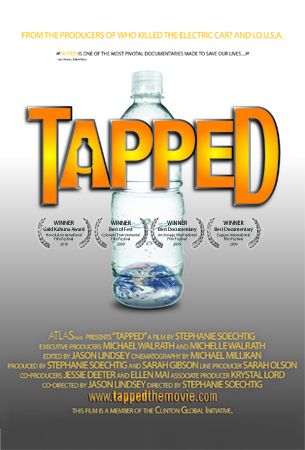
Back in March, we reviewed the stirring documentary Tapped, which chronicles the harmful environmental and health impact of our bottled water addiction. Since our World Water Day 2010 coverage, the filmmakers have embarked on an ambitious “Get Off The Bottle” 30 city, 30 day bus tour, set to conclude on April 22, Earth Day. Tapped director and producer Stephanie Soechtig took time out from the tour to talk to ScriptPhD.com about the tour, their efforts to educate people about bottled water, how the film’s release has impacted her, her wishes for changes in the advertising and marketing of bottled water, and things we can all do to make that happen. Day 2 of our Earth Week coverage continues on the theme of how valuable water is to our environment. For our interview with Stephanie, please click “continue reading.”
ScriptPhD.com: Where did the idea for Tapped come from? What inspired you to make this movie?
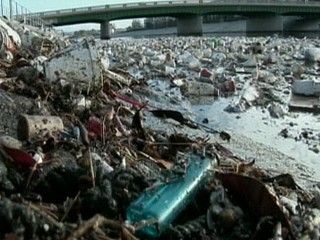
Stephanie Soechtig: The initial idea for Tapped began with the movie’s executive producer Michelle Wolrath sending me a link to this video about the plastic stew in the Atlantic Ocean [the Atlantic Garbage Patch]. At that time, there was ten times as much plastic as there was plankton, and now we know ten years later that there’s forty times as much plastic as plankton. I saw all that plastic in the ocean and it physically hurt my heart. I thought, “How do we not know about this?” I was a journalist, so I was pretty well-read. And I was also pretty green, so I followed all of these things and I hadn’t heard of it. And so, that led to a continued discussion with my executive producers (a husband-and-wife team) about what other environmental issues might be out there that hadn’t yet been covered. Water and plastic kept coming up. And eventually, [we came to a consensus] to do a movie on bottled water.
SPhD: Can you talk about the arduousness of the filming schedule?
SS: I think that the filming seemed arduous at the time, however now in comparison to the 35-day cross-country trip, it looks like a walk in the park. We got to fly most places [during the filming] and we had a team with us, and everything paled in comparison with what we’re doing now. The toughest part about making Tapped was picking what actually got to stay in the film and what had to be cut, because there was so much to cover, and so the film kept evolving and taking on a life of its own. The filming process, while it was rushed, I have a news background, so I was used to a quick turnaround. It was a really good time, and we had a great group who were all primarily women. We had three moms on the staff, so it was great to create an environment for a group of women who were all looking out for each other.
SPhD: I’m sure you get asked this all the time, but we’ll ask again. A huge thesis of the film Tapped is the dangers of bottled water usage. The number one alternative, of course, is to drink tapped water. However, the documentary Flow raises some questions about the safety of tap water. What is your response?
SS: You know, that’s not the impression I got from Flow. I knew they brought up problems with some tap water, but I always feel like Tapped picks up where Flow left off, with Flow as a perfect companion piece. We are aware that large portions of the country lack access to clean drinking water. We try to say it a few times in Tapped, that we believe there is a time and a place for bottled water. If I was in Mexico, I’m sure I would drink bottled water. And so, if you live in those portions of the country that don’t have access to clean drinking water, perhaps bottled water is a short-term solution. My concern is that I think we have all turned to bottled water as an alternative to tapped water. Rather than raising hell about lack of access to clean drinking water in parts of the country, we’ve just quietly gone and bought bottled water. And I think that sends a really dangerous message to our leaders that tapped water isn’t important to us. While I do think it may be a short-term solution for parts of the country [and world], and for disaster relief and times where it’s a healthier alternative, but for the most part, it’s become a dangerous alternative that has lulled us into this false sense of complacency to think, “OK I can get bottled water, so I’m fine.” As we know, 40% of bottled water is tapped water, so it could be suffering from the same problems depending on the area that it’s
bottled in.
SPhD: I’m lucky to live in a part of LA that has really clean tap water, so I don’t have to think twice about drinking tapped water that I quite frankly don’t even filter with a Britta. What do you recommend for people who have seen the film, who want to commit (or recommit) themselves to drinking tapped water, but they might have reticence?
SS: Yes, because again, the municipal supply may be safe, but you don’t know what the pipes are like delivering it. So what I would advise is one of two things. Have your water tested directly from the tap. Either send it out, buy an at-home testing kit, or a lot of the companies trying to sell you a filter will come in and test it for you. See what your water contains and buy the appropriate filter to filter out what you need. We have become fans of the filter called Multipure. The reason we like them is because they have some of the highest official certifications independently tested. And they also have a variety of options—you can have a house filter or a counter-top filter. So we like that they offer that price range for people.

SPhD: We’re big fans of media and advertising at ScriptPhD.com. And one of the things I loved about Tapped is that you talked about the genius advertising and marketing campaigns that have contributed to the popularization of bottled water. When you have famous celebrities like Jennifer Aniston endorsing SmartWater, could celebrities be convinced to not only end these endorsements but to promote something as unsexy as drinking tapped water?
SS: I would love that. If that’s the only thing that Tapped accomplished, and we didn’t sell a DVD for my whole life, I’d die a happy woman. That type of accomplishment and that type of endorsement of protecting our tapped water is long overdue and needed, but the municipalities don’t have the multi-million dollar budgets a company like SmartWater has. Speaking frankly, what I find upsetting is these people that make plenty of money on the films that they do—like Jennifer Aniston, who’s doing very well—would lend their faces to tap water and repairing the infrastructure. Which may be less sexy, but then again, that’s why you need someone like Jennifer to raise the awareness to it. We live in a celebrity-driven culture. It troubles me that she would endorse a product like this, and I have to honestly believe that she just does not know the truth about bottled water. That’s why we have a petition to her [and SmartWater endorser Tom Brady] on our website asking them to end their endorsement.
SPhD: It’s funny to me how plastic bottle manufacturers react to movies such as yours or anyone that brings up the deleterious issues of bottled water. Recently, for example, Dasani, which is a brand featured in the film, announced that they’re manufacturing bottles made partially out of “biodegradable” plant material. Meaningful change or greenwashing?
SS: I think it’s greenwashing. I wish it wasn’t. I wish I didn’t believe this. First of all, the fine print on the new Dasani plant bottle says “up to 30% of biodegradable material,” and that’s such a scam. Up to 30% could mean anything. The second problem is that they continuously sabotage the Bottle Bill, which we know increases recycling and has a proven rate of return. So putting 30% of plant material in a plastic bottle only makes it less recyclable because we don’t have the recycling facilities to process that type of material. It also emphasizes to me that they continuously argue against people like me, that plastic isn’t bad for you and I’m some crazy fearmonger. Well, if plastic isn’t bad for you, then why are they switching? I feel like they’re only underscoring my concerns about plastic.
SPhD: Well, it’s a well-known fact that the FDA has ignored BPA safety for quite some time, and is only now embarking on a controversial $7 million dollar study, when we know the ill-effects of this compound well and good. It sort of feels like the government has their hands tied behind their backs in terms of any meaningful change.

SS: And I’d say that they have their hands tied behind their backs by large lobbying dollars. As we have seen, money talks, and the public is sadly not a priority. The really interesting thing to learn was about the Toxic Substance Control Act. It’s 34 years old, and the burden of proof on the EPA to say that a chemical is dangerous can only be attained from the information that the chemical industry provides. So what happens is that I think BPA is safe, and I hand in to the EPA or the FDA my findings. But I make $11 billion off of this product, so I’m not going to hand in findings that show that anything is wrong with it. At the EPA and the FDA, I’m not given a budget to challenge these things. They only look at their science to raise concerns about their product. There is nothing logical about that.
SPhD: Let me ask you this, since you are literally on your road trip as you’re talking to us. What has been the response from people who have viewed the film and interacted with you during the 30 day road trip?
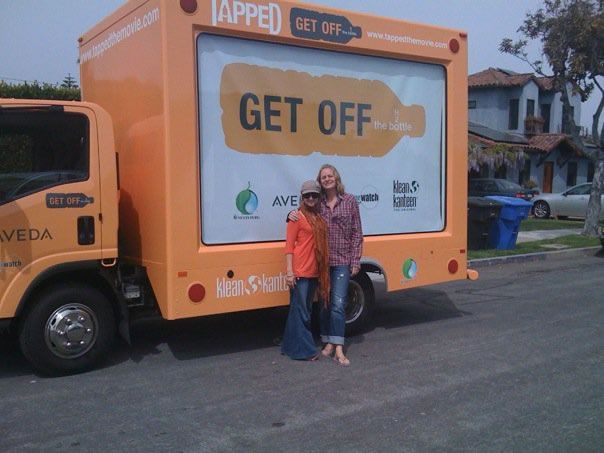
SS: We’re definitely making an impact. And that’s kind of the fuel that keeps us going every day. [For] people in the theatres, after Tapped ends, it’s nothing short of magical what happens after those Q&As. People are pissed, they’re inspired, and they become aware during the question and answer session how much the burden of change lies on their shoulders. So they look at us and say “Now what?!” and I would respond that it’s up to you. This movie is just something we created as a tool to bring about change. We’re heavily reliant on the public to spread this word, to say that this is important to them, and to make sure that they get it out there. And they’re into it! Which is so awesome to see. People will commit, come out and buy five DVDs at a time because they want to send it to everyone that they know.
SPhD: I think it’s such an important new methodology of enacting change. Fight corporate cash with grassroots power!
SS: I hadn’t realized how difficult it was to enact change with a grassroots movement. I thought people would naturally come out in the thousands and be like, “Of COURSE we care about tapped water.” But it’s not quite as easy as I had hoped it would be. It’s a very slow-growing movement, and of course we also have the problem of media that’s also beholden to advertising dollars. This makes it difficult to get the kind of exposure that may help us reach a larger audience. So we’re literally doing it one room at a time.
SPhD: One of the themes we continually come back to is corporations’ advertising dollars and power. One of the biggest corporations covered in Tapped is Nestle, for both their egregious practices of pumping water out of communities as well as how much they collude with plastic manufacturers. Any ramifications for these companies because of your movie and advice for customers that want to use their wallets to make a statement?
SS: We have seen bottled water sales go down this past year. Bottled water sales were doing nothing but going up for the past ten years. This past year we saw a slight dip. The water industry credits it to the recession. And that may absolutely have a lot to do with it, but I think there’s been a bottled water backlash, fueled in part by Tapped and grassroots organizations working tirelessly to get the word out there. So I think there are repercussions, and I think they’re getting desperate. There’s this guy, Tom Lauria, who is the lobbyist for the International Bottled Water Association, and if you go online to look at any story about Tapped or more recently about the story of bottled water, you’ll see he writes in to discredit the film. He spends his whole day doing it. The interesting thing about Tom Lauria is that he used to be the head lobbyist for the tobacco industry, and I think that’s no coincidence—that the bottled water industry would seek out someone who has that background, given the information that is coming out about both the environmental damage and the chemical dangers that people may be experiencing.
As far as consumers, the easiest thing is to not buy bottled water. I would say taking the Bottled Water pledge that we have on our site, which then gets sent to bottled water companies to show them how many people have agreed to give up their habit. And lastly, I think people underestimate the power of writing a note and complaining and fighting legislation and paying attention to the people we elect and letting them know what is important to us. Don’t sit back and hope that things will somehow take care of themselves. We have made it easy for people on the Tapped website to find and sign petitions.
SPhD: How has your consumption and behavior changed after the making of this movie?
SS: I formed a lot of new habits by bringing a Kleen Kanteen water bottle with me everywhere I go. But it’s actually changed my life in so many other ways, in trying to generate as little waste as possible. During the making of this film, I had a Starbucks latte waiting for me every morning. When you see the Garbage Patch, you realize it’s not just water bottles. They’re a big offender, but you start to cut down on all waste. We bring our mugs now when we want to get coffee, we stay away from plastic Tupperware, try to stay away from any plastic whatsoever. When I order food to go, I ask them to wrap it in tin foil. I’m just much more aware of how much plastic is out there, and how mindlessly we grab for it. It’s just the little things. Like for our road trip, one of our producers brought a Tupperware filled with silverware so that we wouldn’t use plastic knives and forks. Some people go to more extreme measures than others. And I have just decided that the message we need to send is that doing anything is better than doing nothing. Don’t think that any task or any sacrifice is too small.
*********
Tapped trailer:
A list of things you can do RIGHT NOW to get off of bottled water and help save our environment.
Urge a member of Congress to support The Water Protection and Reinvestment Trust Fund by signing a petition.
Visit the World Water Day website to find out about the global water crisis and see what you can do to make a difference.
CaptainPlanet is an LA-based, Northwestern University-educated, eco-charged sustainability guru who loves film, psychology and saving the planet, one waterless urinal at a time…
~*CaptainPlanet*~
*****************
ScriptPhD.com covers science and technology in entertainment, media and advertising. Hire our consulting company for creative content development.
Follow us on Twitter and our Facebook fan page. Subscribe to free email notifications of new posts on our home page.
]]>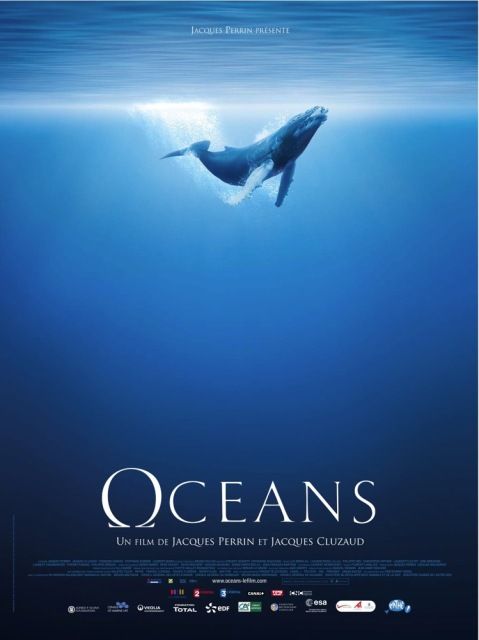
Happy Earth Week 2010, everyone! Here at ScriptPhD.com, we have devoted a number of articles to environment, sustainability and eco-awareness as part
of our continuing “It’s Not Easy Being Green” series. This year, in celebration of the 40th anniversary of Earth Day, we are devoting the entire week to articles, interviews and profiles of companies, individuals and content that raises awareness of sustainability efforts and new ideas for the green science revolution. Because water lies at the heart of most modern environmental crises, we kick off Earth Week with CaptainPlanet’s review of the stellar new DisneyNature documentary Oceans, a truly spectacular oeuvre that celebrates the majesty of our most important and delicate resource. We also include a number of practical, easy things you can do right now to make a difference globally by acting locally. For our Oceans review and to find out what you can do to help protect our Earth’s water supply, please click
the “continue reading” cut.
When I was three years old, my parents took me on a vacation to Atlantic City. It was my first time ever to see the ocean, and my parents were excited to see my reaction at seeing the water when we arrived at the beach that morning. Although I don’t remember the experience, I’ve been told that when I first set foot on the beach, I had a very concerned look on my face when I saw the waves pounding the shore. I ventured closer to the water to get a closer look, and upon surveying the incoming waves, I promptly turned on a dime and outran my parents back to the hotel without stopping. When my parents finally caught up with me to find out the reason for my distress, I said, “the river came out of itself,” in awestruck horror at the ocean’s power.
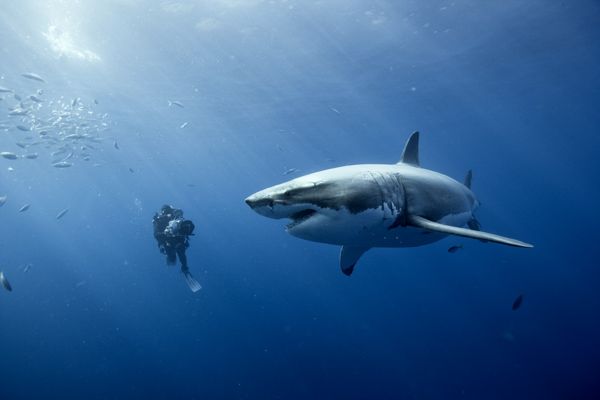
Oceans, a DisneyNature documentary premiering in theatres on Earth Day, April 22, 2010, opens on a similar theme of childhood wonder as a little boy on a beach stares out at the vastness of the ocean before him and wonders what an ocean is. As children, before we learn names for what things are called, and prior to learning about taxonomical categories in biology courses, staring at an ocean and all of its inhabitants is truly an exercise in wonder. Oceans ignites that childlike wonder while exploring the richness, beauty, danger and primordial nature of the sea. Directors Jacques Perrin and Jacques Cluzaud clearly have a knack for inciting wonder. Perrin directed the acclaimed The Winged Migration in 2001 and Cluzaud’s resume features work in IMAX films and innovative projection techniques.
Disney launched the DisneyNature label after the worldwide success of March of the Penguins in 2004. Their mission is to release one nature-related documentary per year to raise awareness about the interconnectedness of humans and nature, including what actions we can take to positively impact the environment. It is promising to see a global media corporation as hefty as Disney champion sustainability in a serious way. And it will be clear to anyone who sees Oceans, a top-notch production with stunning cinematography, narration and musical score, that Disney spared no expense to produce this film.
Pierce Brosnan, the film’s narrator, seems to have found a daft second career in narration, starting with his excellent work on the pre-recorded audio tour of the 2006 Magritte exhibit at the Los Angeles County Museum of Art. Brosnan’s voice, retaining the suaveness of his 007 days, guides us on a journey through waters of the globe. It seems at times as though the film has managed to capture every single creature that inhabits the oceans, as impossible as that would be. From whales, dolphins, sharks, sea lions, polar bears, otters, fish, crabs, shrimp, plankton, turtles, to penguins, octopi, jellyfish, and many more, it’s easy to forget just how many members of the animal and plant kingdom reside
in the oceans.
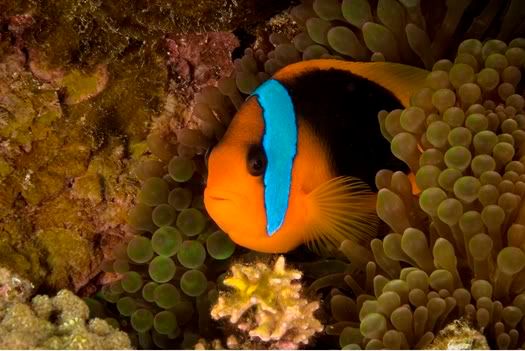
In one of the film’s most breathtaking sequences, we witness a school of sardines massacred from above and below by an army of birds, dolphins, sharks and blue whales. The sequence is an orgiastic feeding frenzy, shot from above, on the surface and underwater, accompanied by a kinetic musical score. The different animals in this sequence appear so choreographed that they invoke the ballet of dancing hippos, ostriches and alligators from the “Dance of the Hours” sequence from Disney’s animated Fantasia masterpiece. The sequence ends with a blue whale breaching the surface in the center of concentric rings of dolphins, fish and birds, a prima ballerina taking her bow.
Oceans is primarily a love letter to our world’s oceans, surveying the various topographies and lifeforms of the world beneath the surface that we often take for granted. Fortunately the film doesn’t shy away from discussing the danger that human activity poses to oceans. Although Oceans was never intended to be a hard-hitting piece of environmental journalism, it does strike a good balance between education and advocacy. The film highlights how advances in satellite imagery allow us to see where industrial pollution flows from rivers out into the open ocean, much the same way a calcified artery might appear on a heart scan. In a regular satellite photo, the river appears to be as blue as the ocean, but when the view switches to the new technology, the pollution in the river, heretofore unseen, materializes in the photo as a black, foreboding stream. The oceans have become humanity’s dumping ground for hundreds of millions of tons of trash each year. In another sequence, we see gigantic fishing nets that sweep vast swaths of water, a practice known as trawling, decimating global fish populations and killing other animals unlucky enough to get caught in the vast net. And in Antarctica, we are shown how rising global temperatures have resulted in the demise of the polar ice caps. Though the film doesn’t broach the topic directly, human water consumption is another imminent crisis facing our oceans. In a brilliant editorial, National Geographic Society chairman Gilbert Grosvenor discusses how human water usage is unsustainable and touts a National Geographic issue devoted entirely to water. (Download here.) Towards the end of Oceans, Brosnan boldly (and correctly) states that the greatest threat to the ocean is human indifference. We hope that you attend, absorb and engage in activism, even at the most basic levels to prove him (and all of us) wrong.
Coinciding with the film’s release, Disney has launched a campaign, in partnership with The Nature Conservancy, to create a protected area of coral reef in the Bahamas. Each moviegoer who attends an Oceans screening in the first week of the film’s release will help contribute to the cause. The campaign for the previous DisneyNature release, Earth, resulted in the planting of an astonishing 2.7 million new trees in the Amazon rainforest. The Nature Conservancy, founded in 1951, protects more than 119 million acres of land, 5,000 miles of rivers, and 100 marine conservation projects globally. With a staff of more than 700 scientists, they pursue their goals through science-based, non-confrontational strategies.
Oceans Trailer:
Oceans goes into wide release on Earth Day, April 22, 2010 at theatres nationwide.

•Contact your congressional representatives to voice your support for the Oceans-21 Act: a bill that adopts the key recommendations of the U.S. Commission on Ocean Policy and the Pew Oceans Commission to develop a holistic ocean health plan. This bill, unlike past ocean legislation, treats the disease, not the symptom.
•Educate yourself about the sustainability of seafood. Check out “Bottomfeeder: How to eat ethically in a world of vanishing seafood” by Taras Grescoe.
•Check out the Monterey Bay Aquarium’s guide to seafood
•Volunteer or donate to ocean related organizations. If you live by a coastal area, attend a beach clean-up.
•If going on a cruise, choose an environmentally friendly cruise line
•Support elected officials who support the ocean.
•Keep trash out of the oceans—if you don’t already, recycle, reduce, reuse and compost as much of your waste in your home and office as possible. Earth911.com is an exceptional resource for tips on recycling, finding ways to be greener, reduce waste, and purchase products made of recycled materials.
•Have more ideas for us? We’d love to hear about them in our comments section.
CaptainPlanet is an LA-based, Northwestern University-educated, eco-charged sustainability guru who loves film, psychology and saving the planet, one waterless urinal at a time…
~*CaptainPlanet*~
*****************
ScriptPhD.com covers science and technology in entertainment, media and advertising. Hire our consulting company for creative content development.
Follow us on Twitter and our Facebook fan page. Subscribe to free email notifications of new posts on our home page.
]]>“The Last Beekeeper”
ScriptPhD Grade: A

A compelling, socially and scientifically significant new film is buzzing its way into the 2009 Los Angeles Film Festival. From director Jeremy Simmons, The Last Beekeeper is a stirring new documentary that explores the ramifications of Colony Collapse Disorder (CCD), the mysterious HIV-like pandemic killing bees en masse, on beekeepers, the pollination industry, and our ecosystem. The filmmakers follow the lives of three beekeepers over the course of a year, as they prepare and transport their bees to California’s massive annual almond pollination, an event that requires the assembly of nearly all American bees. In depicting their struggles, triumphs, and personal pain, the film delves into the scientific mystery behind CCD, the personal relationship that bonds an apiarist to their bees, and the lengths of devotion three human beings take to save themselves and an insect in crisis.
Nicole Ulibarri might have had a very different calling in life. Described by her family as smart and ambitious, Nicole got a college education and became a Seattle career woman. But she also comes from several generations of beekeepers, and the calling, along with anguish over a painful family loss, led her heart back to Montana, where she became a beekeeper. Eric Mills is probably the most interesting Southern-to-the-core gay beekeeper you’ll ever meet. Meticulous, obsessed, at times arrogant, and profoundly gifted at his profession, Eric sums up his philosophy: “If you take care of the bees, they will take care of you.” Matt Hutchins is the archetype of many blue-collar, self-made small business owners in America. His struggling rural Washington business has been decimated by dying bees, but Matt’s perseverance, sense of obligation, and love of his craft drives his desire to keep going. In 1996, the almond industry got a huge boost when California led research efforts on the health effects of almonds, leading to a doubling of almond consumption worldwide. California is the industry leader in almond production, growing 80% of the world’s supply. The caveat is that almonds are almost completely reliant on bee populations for pollination. As such, the yearly California crop acts as a sort of beekeeper’s “Yukon gold rush”. 75% of all American beekeepers head out to California yearly to pollinate almonds, and rely on this event to earn most of their income (approximately $150 for a full hive). Among them are Nicole, Eric and Matt. Would their hives survive the stressful voyage to California? Could they beat the unbelievable odds against them to make a year’s worth of work pay off?
What is Colony Collapse Disorder? Beginning in October 2006, some beekeepers began reporting losses of 30-90 percent of their hives. In 2007, 20 billion bees disappeared. This phenomenon, for which scientists have not been able to elucidate a cause, has been termed “Colony Collapse Disorder”. The main symptom of CCD is simply no or a low number of adult honey bees present but with a live queen and no dead honey bees in the hive. In a 2007 report prepared for Congress by the National Academy of Sciences National Research Council’s (NRC) “Status of Pollinators Committee”, several factors were isolated as contributing to CCD, including invasive parasitic varroa mites, introduction of Africanized honeybees to replace dying European colonies, resistance to antibiotics treating American foulbrood, the major bacterial disease affecting honey bees, poor nutrition, the small hive beetle, the use of insecticides in crop protection and the stress inflicted on dwindling US hives in almond pollination. In response to this crisis, the Agricultural Research Service arm of the US Department of Agriculture has released an action plan to mitigate honeybee losses from CCD. Heavily featured in The Last Beekeeper, Professor Dennis vanEngelsdorp and his group at the University of Pennsylvania are attempting to figure out the exact reasons bees are dying in droves. After conducting autopsies on thousands of dead bees, the sick bees were found to be bigger, darker, with alarming multi-disease abnormalities, indicating a systemic immunity collapse akin to HIV infection. Incidentally, for one of the best explanations of CCD and celebrations of beekeepers, check out this video TED Talk entitled “Where Have All The Bees Gone?” presented by Professor vanEngelsdorp, in which he delves into the gentle, misunderstood creature’s important place in nature and the mystery behind its alarming disappearance:
Beekeeping is an essential component of modern agriculture, providing pollination services for over 90 commercial crops grown in the United States. The honey bee adds $15 billion in value to agricultural crops each year, and the demand for honey bees is growing. The California almond crop alone uses 1.3 million colonies of bees for pollination, approximately one half of all honey bees in the United States.
Several important running themes are explored throughout this movie, with disappearing bees as the background context. Loss and devotion at all costs. Through all three stories told runs a profound sense of loss (whether Nicole’s personal tragedy or Matt’s hive devastation) and the cost of being a modern beekeeper. Matt’s decisions cause tremendous strife within his family, while Eric, whose partner quit his job to assist him with the business, sees himself as fungible compared to the bees. Bees as humanlike creatures. Through some very adroit camera work, Simmons is able to provide a rare emotional purview into the world of bees helping one another, working together, dying together. Above all else is the love of the bees. The beekeepers portrayed in this film make tremendous sacrifices, professionally and personally, but are motivated and driven because of a core love for the bees. At times gut wrenching, The Last Beekeeper effectively communicates the frustration and helplessness these caretakers feel.
If the current situation does not improve, the future for beekeepers looks pretty grim. As it stands, there are less than 1,600 beekeepers in all of the United States. (In 1950, there were 500,000.) At the rate they are dying, bees will cease to exist in North America by 2035. It is up to scientists, environmental activists, and ordinary citizens to take action, get informed, and prevent these assiduous, necessary, beautiful creatures from disappearing from our planet. At the end of the movie, sitting in his nearly devastated, ghostly apiary, beekeeper Jim Robertson sadly muses how much honeybees serve by nature. They make enough honey for themselves and everyone else, but we are constantly trying to get more out of them than they can give us. “It’s foolishness,” he remarks quietly. Foolishness, indeed.
The Last Beekeeper is a World of Wonder film, directed by Jeremy Simmons and produced by Fenton Bailey and Randy Barbato. It premiered at the SXSW Film Festival on March 14th, 2009. It is an official selection of the 2009 Los Angeles Film Festival, and has two screenings: Saturday, June 20, at 2:30PM at the Regent Theater (already passed), and on Thursday, June 25, at 4:45PM at the Landmark 4.
ScriptPhD.com had the opportunity to talk with Jeremy Simmons and Fenton Bailey and get their in-depth thoughts on the film and the beekeepers. For a transcript of our interview, please click “continue reading”.
Interview transcript with Jeremy Simmons (director) and Fenton Bailey (producer) of “The Last Beekeeper”:
ScriptPhD: Listen, guys. Before I get to talking with you about the movie, I have so many questions and we’re gonna write up a beautiful review article on our blog. I enjoyed the movie immensely. It was really, really wonderful. And I just wanted to tell you on a personal level, when I saw the dossier for the LA Film Festival, and when I saw this move [listed], I kind of—my heart jumped a little. I knew I had to cover it on my website because my grandfather was actually a beekeeper.
Fenton Bailey: Oh amazing!
SPhD: Yeah, when I was a little girl, I grew up in Serbia, in Belgrade, and he was a beekeeper. He had ten of those really large, I don’t know what you call those boxes that they keep the honeycombs in. But he had ten of those in his garden, and he did all of that stuff. Like when I watched the movie, their beekeeper [suits] and the smoker, I could smell it, you know it brought back all these really incredible memories, and the honey that we used to have every summer. And I think my grandpa would have been really sad about what’s happening [to the bees]. So, I just wanted to thank you, because I watched it from an incredibly emotional place, and so it just really got to me. And I was not expecting that from a documentary. So, I guess my first question is [about] the material itself. Obviously this is an incredibly important environmental issue, and it hasn’t sadly been highlighted by the media, and it’s slipped through the radar. Where did you guys find the material, and how was it that it came across to you as “This movie has to be made. This is a documentary we must make.”?
FB: I’m gonna rush in an answer that question. Your response and what you just said was so moving and apropos, because, we made this film purely as an emotional film. We didn’t set out to try and scientifically investigate the cause of Colony Collapse [Disorder], We were trying to engage people’s emotions to this terrible thing that is happening. And that in a way is, to answer your question, because when the stories first started surfacing about bees disappearing, I was reading this book called “Six Degrees.” And Six Degrees is a book that documents what will happen on Earth with each degree of global warming. And it’s a horrifying book to read, and one of the scary things in is what they call the “Great Age of Silence,” which is where we wake up and because of these changes in climate and pollution and all the rest of it, the only [creatures] alive are us. There’s no birds, there’s no insects, very few other kinds of animals you know, it’s just us. And it’s this silence. And that just sort of struck this poetic feeling. And Jeremy [Simmons], who we’ve worked with many times over the years, is a poets’ director. He just directs emotionally. And it was about a story that we thought we wanted to tell, because I think it’s hard for people whose relatives aren’t beekeepers to have an emotional connection with bees. Bees are things that sting, and they’re little insect-y things. They’re bugs.
SPhD: Sure, absolutely. It’s interesting that you bring up the beekeepers and their emotional attachment to bees, because the beekeepers’ character really came through in this documentary. And I have to tell you, very surprising. Because when I read the synopsis, and I saw, “OK, we’ve got a beekeeper from Montana, a beekeeper from South Carolina, and a beekeeper from Washington” I kind of thought I knew what you were going to present. And when I watched the movie, I thought “Holy crap, these people are nothing like what I thought I was going to get.” You’ve got your gay beekeeper from South Carolina, you’ve got the career woman from Seattle who ended up nursing bees in Montana and you’ve got this incredibly emotional guy up in Washington, very sensitive. Was that a surprise for you guys as well, their characters? They defy stereotypes, very much so.
Jeremy Simmons: Well I think what they all have in common, though, is that the bees are incredibly important to all of them. They’re very, very passionate about their bees for one reason or another. And the more I got into meeting beekeepers and researching the documentary, the more I knew that the central figures had to be very, very passionate, had to care about the bees in a really special way. So that’s one of the foundations of the whole documentary.
SPhD: It really came across well, I have to tell you. That was the sort of intertwining theme that ran through all of them. And not only their devotion to the bees, if I may extrapolate one step further, but the impact that it had on them personally, especially with their families.
JS: That’s exactly right.
SPhD: Because all three ultimately, I think Matt and his wife, there was this real strain between them because of this, and Eric, there was this one moment in the movie, if I can use the word cold and chilling, when he says “Well, you know I can always find another partner, but the bees can’t be replaced.” And you’re just sitting there going “Oh my god.” The impact on them, in their personal life, I think is what really shocked me on an emotional level.
FB: I’m so glad that you say that, because I think again it’s like, people, they know the bees go, we’ll make do, we’ll find some other way to make it up and sort it out, And just by simple virtue seeing a simple connection between the bees and their caretakers and how economically or emotionally it’s devastating, we don’t really have to do anything more than that, because it’s like a ripple effect. You know, the bees matter. It’s all about the bees.
SPhD: Well, I think watching my grandfather take care of the bees, I came from a place of real understanding. I remember watching him, I was old enough to know, and there was this real tenderness in watching a beekeeper with their bees. They’re isolated, the relationship, the bond, it’s very personal. And I think when I saw these three people, who were so different from each other, it’s amazing how they all had in common, and that tenderness was what resurfaced in watching them take care of their bees, talk to them, the sadness of the deaths. Unbelievably emotional stuff. How did you settle on the three final beekeepers? I’m very curious what the process was in choosing these people.
JS: I think it evolved from what I was talking about earlier. I was looking for people who were so emotionally connected to the bees for one reason or another. They just saw it immediately and that’s really how I found it. I knew right away was when I found the beekeepers that I wanted to focus on, I knew. I need to follow these three beekeepers. There’s no question in my mind.
SPhD: So you did interview and talk to a number of beekeepers in the process?
JS: I met almost every beekeeper in this country. I mean, there’s probably less than 1,000 beekeeper, so you go to conventions, you hit the road and you meet a lot of them.
SPhD: Wow. And what was their reaction to participating in the documentary?
JS: Well, most of them really wanted to be a part of it, and I think it’s because of the angle that we were taking on this documentary. It wasn’t that the beekeepers themselves were bad, and were ruining the environment. I think with some other pieces that had been the case. I don’t believe that. I think that these are people that love their profession, love the bees, and most of them are—they love the environment. They wouldn’t call themselves that, but they are. And the focus of this documentary was not that they’re the problem, the problem is much larger. And they’re victims as we all are, of something much bigger.
SPhD: Definitely. In fact I thought it was really cool that you pointed out the Catch-22 of the almond pollination. On the one hand, the stress on the bees is tremendous, because when they should be resting they’re on the road, they’re in these crates, and then on the other hand, without this pollination, they don’t survive, they need to do it. So that was a really interesting angle. Any surprises for you guys during the making of the movie?
JS: Well I think early on when I was researching it and I was talking to dozens of beekeepers, the one thread that all their stories had in common was this almond pollination. Nobody spelled it out for me. But as I started to meet every beekeeper, you realize that there’s the central focus of their entire year’s work. For almost every beekeeper in this country. I mean, it’s amazing. You hear that a third of our food is dependent on bees and all that is true, but a lot of these crops, bees help with the crop. So, they make the berries bigger and juicier, and more of them. Almonds? There’s absolutely no almonds without bees.
SPhD: And I didn’t know that before I watched your movie. I was really surprised about that, I had no clue about it.
FB: And there you see it’s kind of an irony, because the almond has been championed as this “Health Nut”. And so, ironically, it’s the pursuit of health, but they’re ostensibly this green thing that’s kind of causing the problem.
SPhD: Oh definitely! That’s why I pointed out the Catch-22. I mean it really was kind of a bitter irony throughout the movie, that the thing that’s keeping the beekeepers in business and the thing that is helping the bees to stay alive is also the thing that’s killing them. And it’s such an interesting conflict right now, that we have to decide what we’re going to do in this regard. Jeremy, if I can pay you a compliment on a directorial level. I thought that some of your camera work choices in this movie were amazing in terms of the storytelling. And it’s really interesting that Fenton mentioned that you were an “emotional director”. Two spots where I thought your camera choices really helped the movie. Number one: you do some close-ups on the bees at a couple of instances that I think anthropomorphizes them. And we don’t often do that with insects or these little creatures. It made them look like people. The first instance was where the one bee had the varroa mite on it, and then the other bee was climbing on it with its little—I don’t know what you call their hands, their little—
FB: Yeah, their little paws!
SPhD: I’m just curious, you used a macro lens for these closeups?
JS: Yes, a super macro lens.
SPhD: The other instance was—and I think the far more emotionally impactful one—was where the one bee who was still alive was circling the dead bee. And at first, it kind of was trying to help it, turn it over, trying to figure out what was going on with its mate, then there’s the realization that this bee is dead and it just walks away. And it’s like this silent scene, like you’re watching the Discovery Channel, but it made me so sad. You made them into human-like characters.
JS: You know the more I got involved in this project, and we started shooting the bees with these macro lenses and following them individually, you start to realize that there’s so much that we don’t know about insects. So I would ask some of these scientists, you know I’m watching the bee help this other bee out by getting rid of the varroa mite, and interestingly, they don’t know—there’s research going on right now to figure out why some bees will help out a bee in crisis, and other bees won’t. Some bees make that choice, and other bees will not. And they don’t know what the reason for that is. And it’s really interesting when you watch how they behave with each other, it’s hard not to anthropomorphize them.
SPhD: I thought it was spectacular because they became kind of like a character within the film, too. And by being able to empathize with them on that level, of anthropomorphizing them, which we don’t often do, it fed in to you being able to connect to this film on a deeper level and to absorb the material. The other area where I thought your camera work was amazing was when Matt got the results of his audit. And you just focused on him, and nobody said anything, there was just this close-up on him and it was silence and you knew. And I thought that was incredibly powerful. He just climbed back into his truck, and you kind of as a moviewatcher went through this process of “Oh I hope it’s good news!” to “What is the news?” to you just know. So I just want to congratulate you, because I thought those choices were really incredible.
FB: You are such an attentive watcher, it’s such a joy to hear you say that. That’s brilliant.
SPhD: I just wonder what your takes are on the three beekeepers. If you guys could sum up in a couple of sentences what your takes of them were. Because the movie very much gave them an angle that I think was true to them, and I was curious if you could sum up what your thoughts were on Nicole, Eric and Matt.
FB: Well you know, my thought is that, to me, they’re all very different characters, yes. And they have these moments where they seem unsympathetic. There is Matt being almost selfish in his pursuit of sticking with it against economic adversity. Or Eric, equivocating about whether he needs his partner, his partner being kind of disposable. Or even Nicole, in a way, doing this thing out of this sense that she feels guilty for her father’s death. And yet, to me, they all have incredible grace. And I think that’s what makes them so compelling. They’re all just showing grace under pressure.
SPhD: And since the movie has been finished, how are they doing? Have you guys followed up with them?
JS: Yeah, there’s been some interesting developments. So they’re all three doing OK. Matt did stick with it for another year.
SPhD: And how did it go?
JS: That was a very difficult year. Of course I wasn’t there for it, but I did call him every couple of months. But he decided to stick with it, and this year his bees did much better. So that’s good. Eric didn’t grow his business because his bees did start to decline, so he decided to spend all of his time and money refocusing on his existing hives and keeping them strong. And he has maintained those hives.
SPhD: Oh good! And he and his partner are still together?
JS: Yes they are, last I heard, they are.
SPhD: And Nicole?
JS: Well, it’s been a kind of interesting development since we finished shooting the film. She sold off a lot of the business, but she—and what that means is that she sold off a lot of her land where she kept her bees. And had a difficult time selling the pieces themselves, because it’s not a private industry. And sometimes it can bee hard to sell the actual bees. So she actually is still running a very reduced number of bees and she has them to this day, and she relocated to a small place in Ojai, [California], and last I talked to her, she had a change of thinking about it. She was happy with running a small number of bees. So that’s a big change.
SPhD: Well, that’s good to hear, because she was kind of devastated at the end of the movie. There was a deep sadness and I’m really glad to hear that she’s on the up and up. Last question, to sort of end things on a future note. After I watched the movie I sort of felt like even though you didn’t start out to make a scientific film, per se, I still feel like this is more than just a documentary. You could easily use this as a didactic tool for educating people about [CCD] and for enacting change on a legislative or a scientific level. Is there any plan to use it in this capacity in the future?
FB: I think that would be great. I mean, because I think the key for any kind of education process is to engage people’s interest. And I think what Jeremy has made is a film that’s so emotionally powerful, it’s very hard not to get engaged, interested and want to learn more. I know that there’s a great documentary about bees out there, it won a Peabody I think. The PBS one. [SPhD note: PBS’s Nature program called The Silence of the Bees.] And it goes into the science of it. But to me, even though it’s got more facts in it, it doesn’t teach you nearly as much as Jeremy’s film. And I think this could be a fantastic educational tool. I would love to—there’s a whole different distribution for educational DVDs, and I would love to get into that circuit.
SPhD: Or even just spreading word and getting this into the right hands. Well I just wanted to let you gusy know that I have my ticket, I plan on seeing it again on Saturday on the big screen, and of course voting, that’s the important thing, and I want to wish you the best of luck in the LA Film Fest competition. It’s been a real pleasure, thank you so much!
FB: You should come say hi to us at the screening, we’ll be there!
SPhD: I will do, I wish you guys all the best. Thank you for joining us, on behalf of ScriptPhD.com.
This post is dedicated to the memory of my late grandfather, a proud beekeeper.
~*ScriptPhD*~

